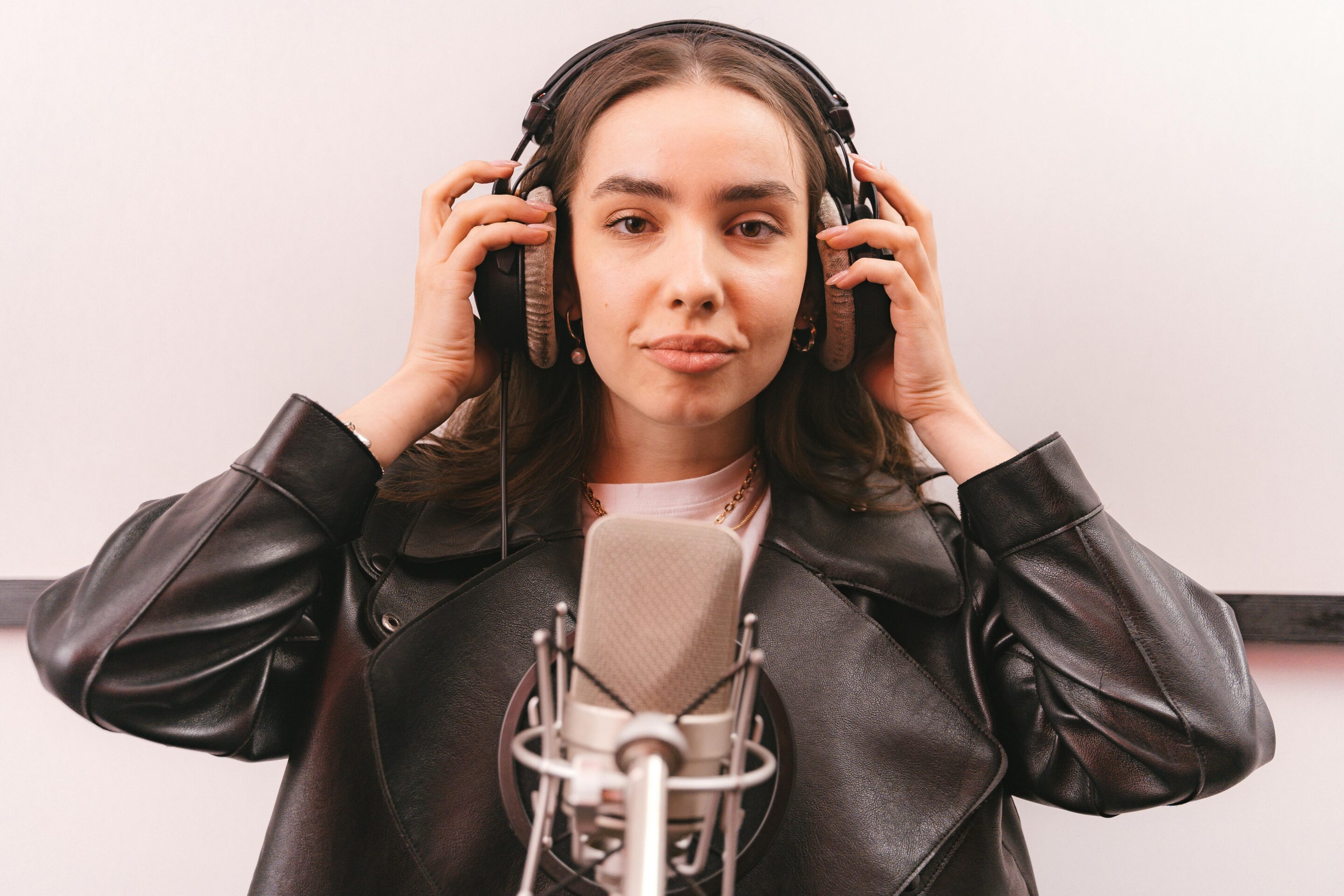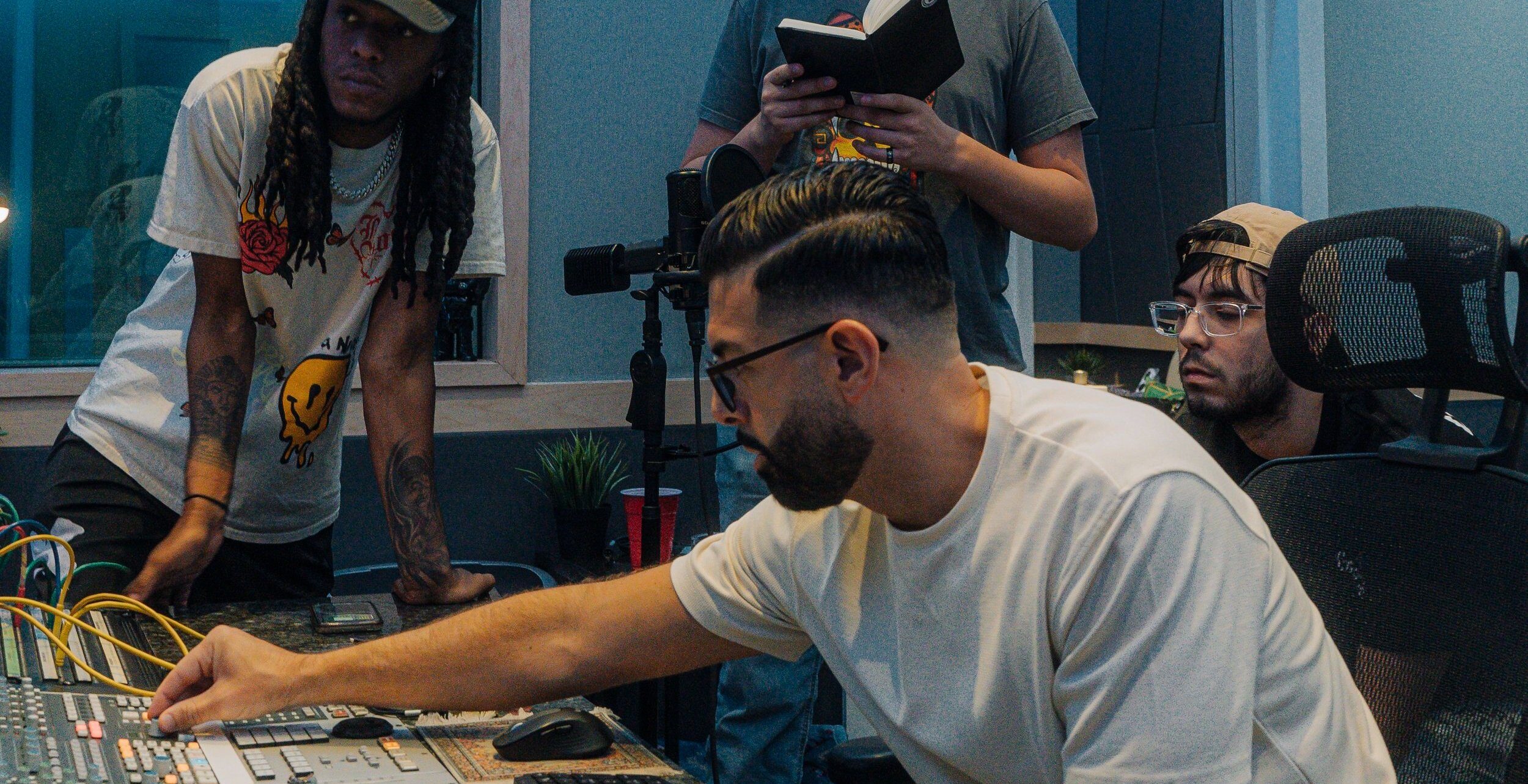In a music studio, there are three production stages; pre-production, production, and post-production. And of all, the audio post-production part is the most misunderstood. Mixing and mastering are essential processes, and we’re here to help enlighten you about them. Want to learn how to master a song? This guide is for you!
What is Audio Mastering?

Audio mastering involves enhancing the overall sound quality before you release it. Here, mastering engineers will pay attention to various aspects such as sound levels, stereo quality, potential clicks and pops, or anything else that could lower the final quality of the audio. It will result in a polished, clean sound optimized for consistent playback across various formats and systems if done well.
The mastering process provides your track with a consistent sound and serves as quality control for your music production. Online mastering ensures that individual instruments have enough headroom. The process results in a finished master with sonic characteristics that sound good.
What Are Some Of The Tools For Mastering
Many mastering tools are available, including DAW’s like Logic Pro X and FL Studio. These software tools enable professional and amateur music producers or mastering engineers to record, arrange, and edit music to perfection.
The differences between mastering and mixing have often blurred through digital technology. Mixing can is a sub-division of mastering. Both processes require an understanding of equalization, filtering, panning, spatial image, compression, and limiting.
Mastering engineers might use different mastering plug-ins or tools for their work depending on the genre they specialize in or the client’s request.
Let’s look at how to master a song in Logic Pro X and FL Studio, respectively.
What Are Mastering Presets?
Online mastering presets are settings optimized for a particular type of music or genre. The mastering engineer can create their own presets or use ones others have made.
Some DAWs (Digital Audio Workstations) include a range of mastering presets that you can use as a starting point for your settings.
How To Master a Song In Logic Pro X
To start mastering Logic Pro X, follow the steps below:
- Create an output folder on your desktop.
- Import a reference track. A reference track is a song from another artist, which you can use as a benchmark for varying elements such as sound loudness in your mastering project. To measure before adjusting sound loudness, use the LUFS Meter.
- Reference with Match EQ. Match EQ is in Logic Pro X. It’s simply a feature that lets you analyze and store the average frequency spectrum of an audio file as a template.
- Use a Linear Phase EQ to preserve the phase of your audio signal. As a result, you will maintain the phase coherency, even when applying extreme EQ curves to the sharpest signal transients.
- Add Level with the Gain plugin. The result will amplify or reduce the signal by a certain decibel amount.
- Using Dither, export the Wave file(16-bit resolution and 44.1 sample rate) to your output folder.
How To Master a Song In FL Studio
How do you master a song in FL Studio? The process is a little more straightforward than in the case of Logic Pro X.
- Export your track or recordings to WAV.
- Create a new FL Studio project, opening your exported track.
- Create a very short fade out at the end of the song (if necessary) to ensure the piece does abruptly cut when playing.
- Peak normalizes the WAV file to increase the waveform’s amplitude. As a result, it will increase the track volume without clipping.
- Create a second FL Studio project, importing the WAV to a Playlist.
- Load the various mastering plugins for different purposes:
- Fruity Parametric EQ 2 cuts unnecessary frequencies.
- Fruity Compressor balances the song’s dynamic range, ensuring there aren’t too big gaps between the quietest and loudest parts.
- Fruity Multiband Compressor helps fine-tune the volume level if it’s not yet adequately balanced after (b).
- Fruity Parametric EQ 2 boosts frequencies. (e)Fruity Limiter maximizes the volume of the audio without clipping it.
Export the song once again to WAV using the highest quality settings, and that’s it.
Tips From A Professional Mastering Engineer
- Mastering is an art. It’s not a set-and-forget process. However, you should have some experience or read up on the subject to know what you are doing. There are many books and tutorials about mastering, so do your research first! Check out our article about rap mastering techniques.
- Start by setting your project sampling rate to the highest possible level (i.e., 96khz or 192khz) so that there’s no loss of information during the mastering process.
- Before you even start to master your track, try changing its structure and arrangement, so it sounds better as a whole – this will make your life much easier when it comes to processing because there will be fewer issues to fix.
- Clean up your stereo mixdown / master by deleting unnecessary tracks, reducing the number of effects used, and shutting any automation off completely. The reason is that mastering uses a flat equalization setting across the whole track, so it’s best if you start with an ‘untouched’ version. You can always process individual tracks.
Final Thoughts On How To Master Your Own Song
Mastering is the most critical part of the post-production stage of a song. The mastering process puts the final touches on the overall sound quality of your music before its release. The good news is that today you can master a song or mix like a pro even when you are not a professional music producer, thanks to the modern mastering plug-ins and tools like Logic Pro X and FL Studio. Of course, you need the ability to follow instructions meticulously and good practice with any of the above software to become a pro. Each software plug-in is easy to use and fun, with powerful tools to get the job done to near perfection. And lastly, you can’t master your music without knowing how your music sounds on different sound systems, so be sure to listen to your music in many different settings.
Along with our advice for what equipment and plugins are best suited for each stage of the process, we hope that these guidelines help you get started on your path towards being an accomplished music producer or engineer.
If you’d like us to mix and master your music, check out our affordable online service here.











